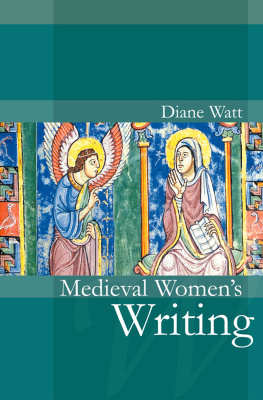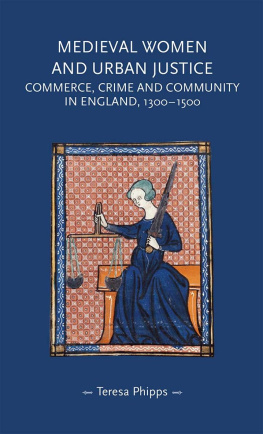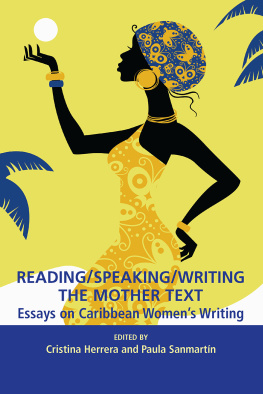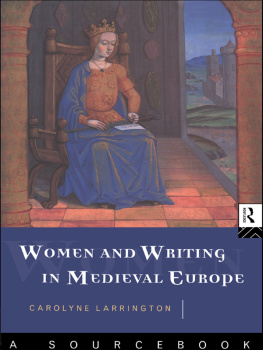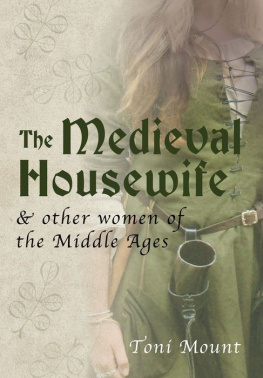Copyright Diane Watt 2007
The right of Diane Watt to be identified as Author of this Work has been asserted in accordance with the UK Copyright, Designs and Patents Act 1988.
First published in 2007 by Polity Press
Polity Press
65 Bridge Street
Cambridge CB2 1UR, UK
Polity Press
350 Main Street
Malden, MA 02148, USA
All rights reserved. Except for the quotation of short passages for the purpose of criticism and review, no part of this publication may be reproduced, stored in a retrieval system, or transmitted, in any form or by any means, electronic, mechanical, photocopying, recording or otherwise, without the prior permission of the publisher.
ISBN-13: 978-07456-3255-1
ISBN-13: 978-07456-3256-8 (pb)
ISBN: 978-07456-5763-9 (Multi-user ebook)
ISBN: 978-07456-5764-6 (Single-user ebook)
A catalogue record for this book is available from the British Library.
The publisher has used its best endeavours to ensure that the URLs for external websites referred to in this book are correct and active at the time of going to press. However, the publisher has no responsibility for the websites and can make no guarantee that a site will remain live or that the content is or will remain appropriate.
Every effort has been made to trace all copyright holders, but if any have been inadvertently overlooked the publishers will be pleased to include any necessary credits in any subsequent reprint or edition.
For further information on Polity, visit our website: www.polity.co.uk
Acknowledgements
Medieval Womens Writing is a book that I have wanted to write for a long time. Years of studying, learning, teaching, listening and conversing lie behind it; the writing was, of course, just the final stage. The debts I have accumulated are so many that it is not possible to acknowledge all of them here. Nevertheless, it is a pleasure to identify some individuals and organizations that have made this book possible. I would like to thank Jocelyn Wogan-Browne for her generous support and encouragement, and Karen Cherewatuk for the help she gave me in the projects earlier stages. Amy Appleford, Ruth Evans and Nicholas Watson shared work with me prior to publication, from which I benefited greatly. For the opportunity to present research that went into this book, I would like to thank Raluca Radulescu, Bob Hasenfratz, Glenn Burger and Steve Kruger, Emma Campbell, Anke Bernau and David Matthews, and Liz Herbert McAvoy and Colman OClabaigh. In Fall 2005, I had the good fortune to be awarded the Charles A. Owen, Jr Distinguished Visiting Professorship in Medieval Studies at the University of Connecticut. The graduate class I taught there enabled me to explore some of the ideas in this book with exceptionally motivated and lively students. Special mention must be made of Josh Eyler, Erin Lien, Nadia Pawelchak, Becky Perry and Britt Rothauser. Thanks also to Bob Hasenfratz for inviting me to Connecticut, and for doing so much to make me feel welcome. I should also mention my doctoral students working on medieval literature at Aberystwyth University, past and present, especially Liz Herbert McAvoy, Malte Urban, Robin Gilbank and Janet Gunning. I extend a general thanks to all the Masters and undergraduate students over the years who have shared my love of medieval womens writing, for our lively discussions and for their perceptive and sometimes hilarious observations, which often enabled me to see old texts in a completely new light. I am grateful to the Department of English Literature at Aberystwyth University and the Arts and Humanities Research Council for enabling me to take a years study leave in 2006, thus making possible the timely completion of this book. I would also like to thank Sally-Ann Spencer, formerly commissioning editor for literary studies at Polity, for inviting me to write the book in the first place, and especially her successor, Andrea Drugan, for seeing it through to realization with such enthusiasm, patience and professionalism. The anonymous readers for Polity and assessors for the Arts and Humanities Research Council offered engaged, thoughtful and constructive criticism at various stages of this project, from inception to completion. Heike Bauer has been here throughout to discuss ideas, to read and to comment upon my writing, to suggest new perspectives and to offer me much needed reassurance. I can never thank her enough. Patricia Watt has, once again, been a careful reader of my work. Clare A. Lees also read the draft manuscript, made many useful suggestions and was incredibly compassionate in her criticisms. In the final stages of the writing of this book, Clare and I shared many ideas, and, indeed, the afterword arose directly out of one of our conversations. It is through knowing her that I have gained new insights into how collaboration and feminism work, and work together. This book is, therefore, dedicated to Clare.
A Note on the Texts
In this book, accessibility has been one of my primary concerns. My target audience includes undergraduate students as well as postgraduates and scholars working in the field of medieval English literature, as well as those interested in womens writing in later periods, and in literary history, and specifically feminist literary history. The medieval works I discuss here are written in Latin and French as well as Old and Middle English. I have therefore decided, wherever possible, to quote from my sources in modern English, either using readily available published translations, or providing my own translations or modernizations. However, in order to preserve some sense of the original languages, and to enable some attention to linguistic detail, wherever I quote at length I also provide the original text following the translation. In addition, I quote and discuss the original language in the text of my argument where it is crucial to a specific point that I am making. I have followed these practices whatever the language of the original text because I do not want to imply a linguistic hierarchy or to make any assumptions about the linguistic training of my readers. Only limitations of space have prevented me from quoting in translation and in the original languages throughout.
Introduction
When did women writers first enter the English literary tradition? This apparently straightforward question is impossible to answer simply because it is the wrong one to ask. Womens writing in the Middle Ages, especially prior to the fourteenth century, remains peripheral not only to conventional masculinist accounts of the literary canon but also to feminist (re-)constructions of womens literary history. The relative dearth of texts identifiable as by women and the lack of biographical information about medieval women writers have contributed to this tendency. Other factors include the often religious (and thus non-literary) content of surviving works, the problem of writing not in the medium of English, and the question of authorial agency in medieval cultures different models of the relationship between composition and writing. This study, which examines womens writing produced in England, primarily in the period between 1100 and 1500, and written in the three literary languages of the period, Latin, French and English, aims to stand as a corrective. The very existence of a tradition of womens writing in the Middle Ages is still in fact widely contested. This applies especially to the marginalized Anglo-Saxon period, which, although chronologically outside the scope of this study as a whole, is considered in terms of the continuity of influence of the Old English saints lives and in relation to questions of their reception. Most medieval womens writing was religious in content and so the primary focus here is on devotional texts specifically saints lives and visionary and mystical treatises although more overtly literary works, as well as personal letters, are included. Atypically of studies of womens literary history, womens writing is here interpreted broadly to include both writing by women (women-authored), such as Marie de France, Clemence of Barking, Julian of Norwich, Margery Kempe and the Paston women, and writing for and about women (women-oriented), such as The Life of Christina of Markyate , the St Albans Psalter and the legends of women saints by Osbern Bokenham. A central argument of this book is that the drawing of a firm distinction between these types of texts does not necessarily stand up to scrutiny: that female patrons, audiences, readers and even subjects can contribute to the production of texts and their meanings, whether they be written by men or by women. In other words, only an understanding of medieval textual production as collaborative enables us to grasp the nature and extent of womens engagement with and contribution to literary culture.

